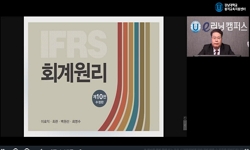In the world with rapid technology change and globalization with open market, many companies are doing their best to gain competitive edge over other companies. In order to survive and pursue their business, company needs to satisfy customer needs by...
http://chineseinput.net/에서 pinyin(병음)방식으로 중국어를 변환할 수 있습니다.
변환된 중국어를 복사하여 사용하시면 됩니다.
- 中文 을 입력하시려면 zhongwen을 입력하시고 space를누르시면됩니다.
- 北京 을 입력하시려면 beijing을 입력하시고 space를 누르시면 됩니다.
연구개발비의 자본화와 기업가치 관련성에 관한 연구 = (A) study on the relevance between capitalization of R&D expenditure and corporate value
한글로보기https://www.riss.kr/link?id=T12668618
- 저자
-
발행사항
부산 : 부산대학교, 2012
- 학위논문사항
-
발행연도
2012
-
작성언어
한국어
- 주제어
-
DDC
657 판사항(21)
-
발행국(도시)
부산
-
형태사항
iii, 75 장 : 삽화 ; 26 cm
-
일반주기명
참고문헌 : 장 65-71
- DOI식별코드
- 소장기관
-
0
상세조회 -
0
다운로드
부가정보
다국어 초록 (Multilingual Abstract)
In the world with rapid technology change and globalization with open market, many companies are doing their best to gain competitive edge over other companies.
In order to survive and pursue their business, company needs to satisfy customer needs by provide outstanding products, develop new technology, improve current product line and innovate production process.
In order to satisfy these factors, Investing in R&D is very crucial in company’s management. Although many previous studies show that R&D expenditure give positive effect on company’s value, degrees of this effect varies depend on many factors.
This paper reviews effect of capitalization rate of R&D expenditure on company’s value by examining 547 manufacturer companies from 2006 to 2010 using Ohlson model.
First, assuming that current accounting treatment restricts capitalization rate of R&D expenditure, we made hypothesis that there is influence of R&D expenditure on corporate value. Based on our test on hypothesis, we conclude that market favors expensing R&D expenditure and market trusts non-capitalized company because C.E.O. do not interfere much.
Second, based on conclusion from previous studies that high technology industry with high R&D expenses lacks explanation of corporate value on accounting information, we tested the relationship of capitalization rate of R&D expenditure based on the type of industries. Our result shows that expensing R&D expenditure increases company’s value on both high technology industry and non-high technology industry. But there was greater influence on high technology industry with high R&D expenditure.
Third, we tested hypothesis that there is an effect of capitalization rate of R&D expenditure on company’s value based on the size of company. Our result shows that there is no significant effect based on the size of company.
Fourth, we tested hypothesis that there is effect of capitalization rate of R&D expenditure on company’s value based on concentration of R&D expenses. Our result shows that there is greater effect on company with high concentration on R&D expenditure than low concentration. Also, we found out that concentration of R&D expenditure has greater effect on company’s value than capitalization rate of R&D expenditure. This shows that it shows more responses from amount of R&D expenditure than method of accounting with R&D expenditure.
Last, we investigate effect of R&D expenditure on company’s value and growth based on capitalization rate. We found that there is high correlation between R&D expenditure and company’s value when growth rate is high.
This study investigate various factors that are relate to capitalization rate of R&D expenditure using empirical analysis. However, in order for a company to find out amount of money that was spend on R&D expenditure, it needs to use figures from company’s financial statement. These amount might be different from actual money that was spend due to differences in title of accounts, terminology and various methods of accounting.
Also, this study shows its limit because it was investigated in the middle of transition in accounting standard from K-GAAP to IFRS. Since this affects various factors that were used in our hypothesis, further studies will need to analyze correlation of capitalization rate, concentration and relationship of R&D expenditure before and after introduction of IFRS.
목차 (Table of Contents)
- 제1장 서 론 1
- 제1절 연구의 배경 1
- 제2절 연구의 목적 및 구성 4
- 제2장 이론적 배경 및 선행연구 7
- 제1장 서 론 1
- 제1절 연구의 배경 1
- 제2절 연구의 목적 및 구성 4
- 제2장 이론적 배경 및 선행연구 7
- 제1절 이론적 배경 7
- 제2절 선행연구의 검토 21
- 제3장 연구설계 28
- 제1절 가설 설정 28
- 제2절 연구모형의 설계 31
- 제3절 변수의 정의 및 표본 선정 42
- 제4장 실증분석 46
- 제1절 기술적 통계량 46
- 제2절 분석 결과 49
- 제5장 결론 60
- 제1절 연구결과 요약 60
- 제2절 향후 연구과제 63
- 참고 문헌 65
- Abstract 72












